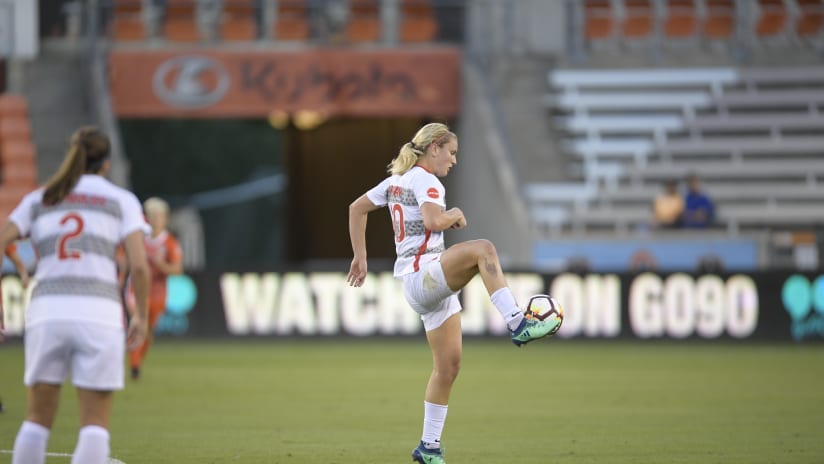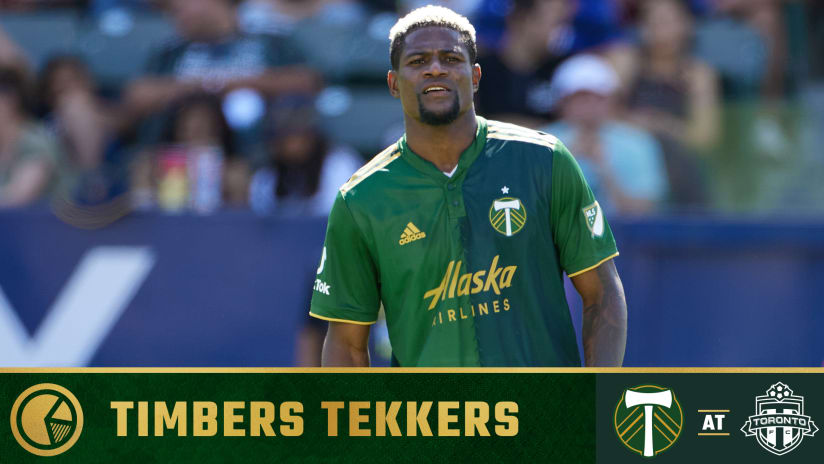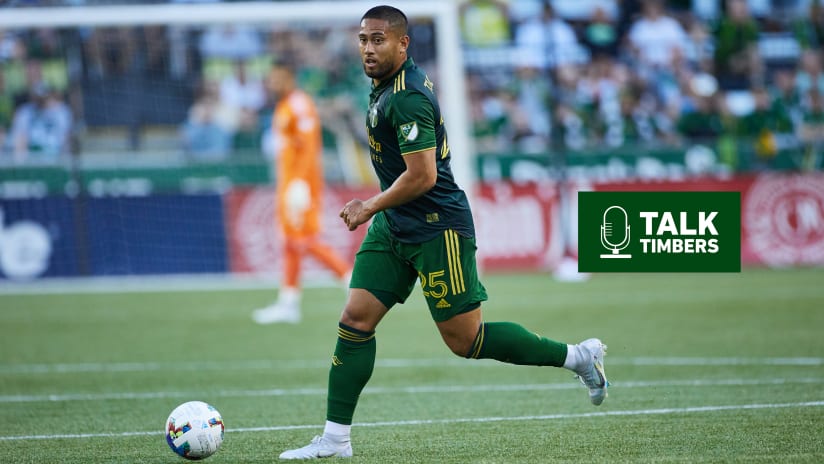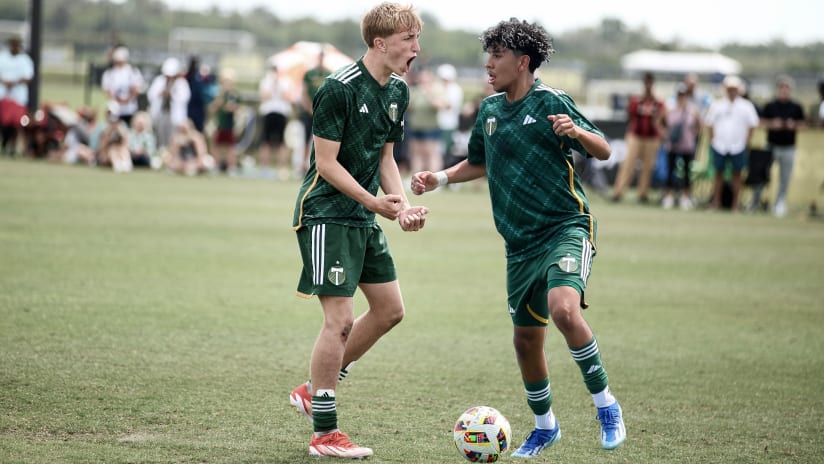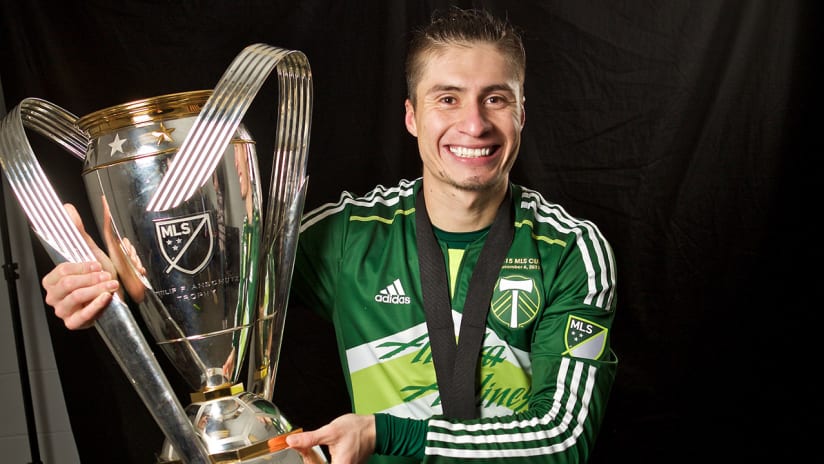Ana Crnogorčevic got her first goal. Ellie Carpentermade her debut. Portland Thorns FC got a valuable point on the road.
Those are the silver linings. The reality is slightly grimmer for Portland, who controlled the first half at BBVA Compass Stadium only to let their hosts back into the game. With the Houston Dash equalizing through Kyah Simon after halftime, the 1-1 result felt more like two points lost than one point won.
“Mixed,” head coach Mark Parsons said, when asked for his evaluation of the game. It’s the same reaction he had a week-and-a-half ago, when the team put up the same 1-1 result in Utah. In that game, the Thorns had dominant stretches where they felt they could have scored more. They also had a moment in defense that left them with one point instead of three.
“I’m pleased with how we started, and (we) just needed to add more in the first half,” Parsons said, “And in the second half, just disappointed the game finished the way it did.”
The good parts of that “mixed” were the breakthrough goal for Crnogorčević, who opened her NWSL account by cleaning up an early melee in front of Houston’s goal; Carpenter’s 71st minute debut, making her the youngest player in NWSL history; and the increased playing time for Tobin Heath and Andressinha, both of whom made their first starts of the 2018 season.
The most memorable part of the match, though, will be the second half; or, more specifically, how Houston was able to sway the game after intermission. Going into halftime up one, Portland had maintained over 70 percent possession, putting together 310 passes (a very high mark for one half) even if that only led to four shots. Houston had sat deep in the first half, partially explaining the low shot total, but over the entire 45 minutes, Portland had dictated terms.
The second 45 was a different story entirely. Houston came out and recorded the first five shots of the half, including Simon’s 57th minute goal from the left side of Portland’s penalty box. The teams would end up even on shots for the half, seven a piece, but over the period’s first 20 minutes, Houston established control, having figured out how the Thorns’ control could be used against them.
“As soon as their counter started to have some impact, or we didn’t stop it early, that’s always going to be tough,” Parsons said. “It doesn’t matter what game it is, or where anybody is in the table, dealing with fast players when you’re in possession, when you lose it, that moment is one of the hardest things to manage.”
One specific tactic proved particularly successful, especially on Houston’s goal. After halftime, Portland played right-wing back Midge Purcehigher, hoping to create the same kind of advantages that led to their first-half goal:
But the balance seemed to be off. The give and take between aggression and protection was leaning too far toward the former. With Purce higher, and staying to the right touchline, Houston found space to attack behind her, pulling the defense to their left as their striker, Rachel Daly, came toward right-center back Katherine Reynolds.
Often, when the Dash won the ball in midfield, they seemed intent on moving into that space, sometimes bringing left wing Nichelle Prince across the defense, toward the middle of the field, in the process. The result left Prince, right wing Veronica Latsko, and a midfielder, Simon or Kristie Mewis, surging toward an area the defense was being pulled away from.
The goal wasn’t the only time Houston tried to execute this maneuver, nor was it the ideal example of it. But in that second-half minute counter, you do see some of the principles in play, with the Dash playing passes and making runs as if they’d trained the movement in the days before.
The result was a goal head coach Vera Pauw could have drawn up on a white board:
Whether Pauw did draw that up or not – whether it was an intended tactic, practiced since Houston’s return from its weekend match in New Jersey – ultimately doesn’t matter. What does is that Houston found an opening, and in the team’s second half execution, the team proved that, despite the 1-3-2 record they carried into Wednesday’s game, they’re now capable of taking valuable points in the NWSL.
Portland, unfortunately, learned that lesson the hard way.
“We’ve been pretty good at [limiting counter attacks],” Parsons said, “and we were good in the first half. We just got a little too open in the second.”
For weeks, we have been taking about Portland’s goals occurring in isolation – that the scheme wasn’t as much of a culprit as the circumstances and decisions behind the goals. On Wednesday, though, scheme did play a part, with Portland’s hope to leverage Purce’s one-on-one dominance costing them at the other end of the field.
It’s the type of problem a 24-game season helps iron out; or, it may not prove a problem at all. The risks Parsons takes with Purce may be a net positive, when played out over the course of a season. Just because a decision allows a goal doesn’t, in the bigger picture, mean it’s flawed.
But after losing out of full points in Houston, it’s a problem, nonetheless; even if only for one night. Although the team can point to positives around Crnogorčevic, Carpenter, Heath and Andressinha’s progress, there will be still some important moments to break down on tape tomorrow.

